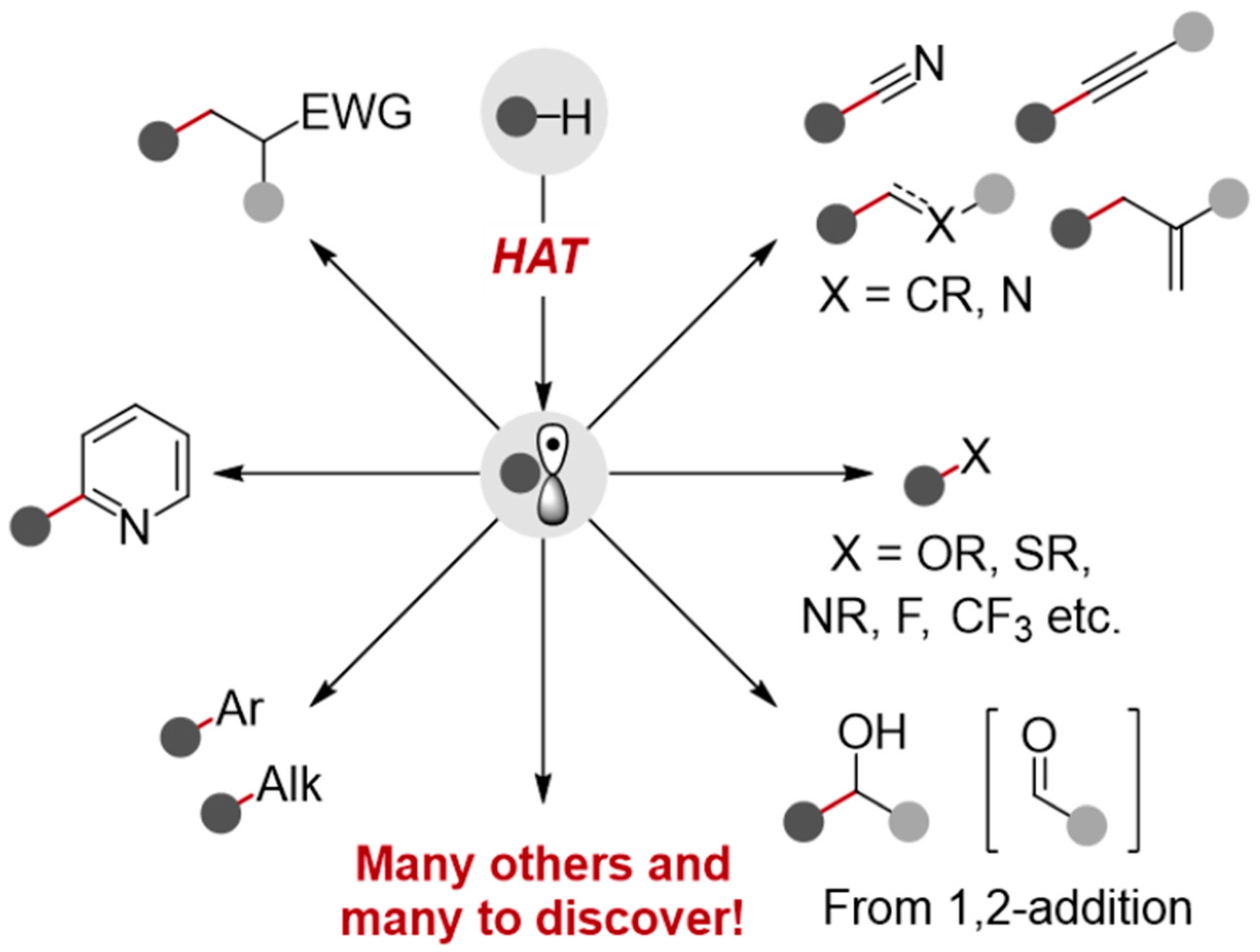Recent Advances in C-H Functionalisation through Indirect Hydrogen Atom Transfer
The functionalisation of C-H bonds has been an enormous achievement in synthetic methodology, enabling new retrosynthetic disconnections and affording simple synthetic equivalents for synthons. Hydrogen atom transfer (HAT) is a key method for forming alkyl radicals from C-H substrates. Classic reactions, including the Barton nitrite ester reaction and Hofmann-Loffler-Freytag reaction, among others, provided early examples of HAT. However, recent developments in photoredox catalysis and electrochemistry have made HAT a powerful synthetic tool capable of introducing a wide range of functional groups into C-H bonds. Moreover, greater mechanistic insights into HAT have stimulated the development of increasingly site-selective protocols. Site-selectivity can be achieved through the tuning of electron density at certain C-H bonds using additives, a judicious choice of HAT reagent, and a solvent system. Herein, we describe the latest methods for functionalizing C-H/Si-H/Ge-H bonds using indirect HAT between 2018-2023, as well as a critical discussion of new HAT reagents, mechanistic aspects, substrate scopes, and background contexts of the protocols.

Meger, F.S.; Murphy, J.A.; Aldabbagh, F.
Molecules 2023, 28 (16), 6127
DOI:
10.3390/molecules28166127

Let's create a brighter future
Join our team to work with renowned researchers, tackle groundbreaking
projects and contribute to meaningful scientific advancements


















